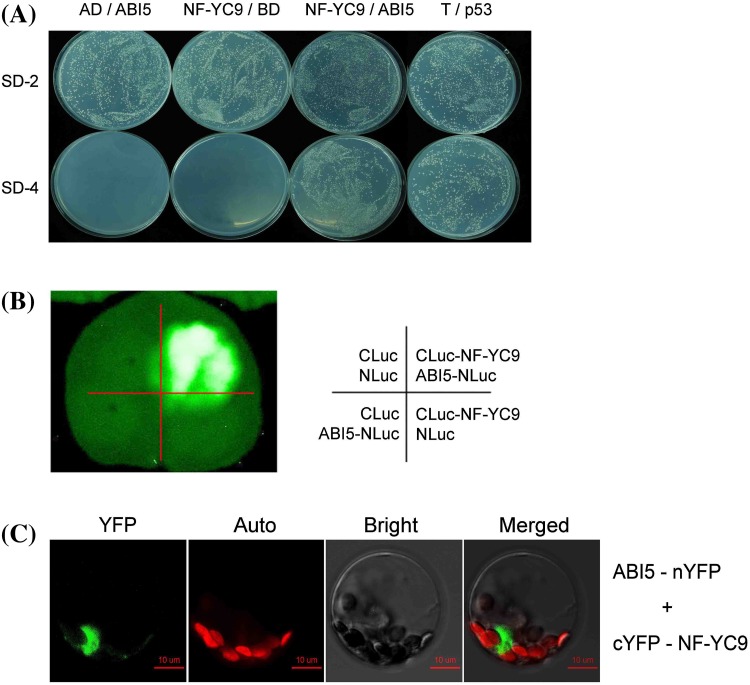Fig. 6.
NF-YC9 interacts with ABI5. a Assays of yeast two-hybrid growth in SD4-drop-out medium (lacking Leu, Trp, His, and Ade) to test the interaction between NF-YC9 and ABI5 protein. The full-length coding sequence of NF-YC9 was cloned to pGADT7 vector fused with the AD, and the full-length coding sequence of ABI5 was cloned to pGBKT7 vector fused with the BD. The yeast cells co-transformed with the construct pairs AD-NF-YC9 plus BD-ABI5 or BD-53 plus AD-T (a positive control) were able to grow in the SD4-dropout medium (lacking Leu, Trp, His, and Ade), while the yeast cells co-transformed the construct pairs AD plus BD-ABI5 and BD plus AD-NF-YC9 (as negative controls) were not able to grow in the SD4-drop-out medium. The experiments were repeated three times with similar results. b Test of the interaction between NF-YC9 and ABI5 by LCI assay. The full-length coding sequence of NF-YC9 and ABI5 were constructed to the C-terminus of Luc (CLuc) and the N-terminus of Luc (NLuc) vector, respectively. Tobacco leaves were co-transformed with the construct pairs as described in the right panel. The left panel shows the luciferin fluorescence of the treated leaf. The experiments were repeated three times with similar results. c BiFC assay to test the interactions between NF-YC9 and ABI5 in the Arabidopsis protoplast system. The full-length coding sequence of NF-YC9 and ABI5 were constructed to the C-terminus of YFP (cYFP) and the N-terminus of YFP (nYFP) vector, respectively, and the construct pair was used to co-transform the protoplasts. The fluorescent signal was investigated by a confocal laser scanning microscope. YFP, ABI5-nYFP plus cYFP-NF-YC9 signal; Auto, chlorophyll auto-fluorescent signal; Bright, bright field; Merged, merged image of the YFP signal with chlorophyll auto-fluorescent signal in the bright field. The experiments were repeated three times with similar results

